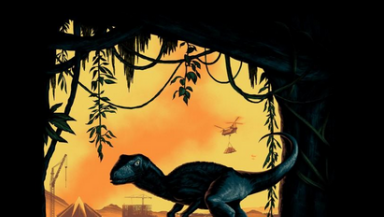
Humans seem to have a great fascination with dinosaurs, especially after Michael Crichton's best-selling novel, "Jurassic Park," was adapted for the big screen in 1993. Now, more than 20 years after the box-office hit first rolled out in theaters, and after two sequels ("The Lost World" shown in 1997 and "Jurassic Park III" released in 2001), the movie-going public is ready for yet another thrilling film featuring the long-extinct creatures.
"Jurassic World" is set to hit theaters on June 12, 2015, and it features a new park built from the remains of Isla Nublar, the island park in Costa Rica built by eccentric billionaire John Hammond. The DNA scientist in the original story, Dr. Henry Wu, returns in the film.
In an earlier interview with IGN, director/ writer Colin Trevorrow said, "But there is a character from the first film who makes sense in our world. This hasn't been announced yet, but BD Wong will be returning as Dr. Henry Wu. He had a much larger role in the original novel, he was the engineer of this breakthrough in de-extinction. He spent two decades living in Hammond's shadow, underappreciated. We think there's more to his story."
But while Dr. Wu and the dinosaurs in the Jurassic Park franchise are all just make-believe, real scientists and archeologists are continuously researching about the fascinating animals. Only recently, several news reports have been published regarding the discovery of species or characteristics previously unknown to the community of dinosaur enthusiasts.
Earlier this month, Science Magazine published a report about the Spinosaurus aegyptiacus. Not only is this species deemed as the largest predatory dinosaur to have been discovered so far (although many plant-eating species grew much bigger than carnivores), it was also semi-aquatic. The fossil shows short hind limbs, flat-bottomed pedal claws, and an elongated neck. Furthermore, its nostrils were placed far back into the skull, and it had a dorsal "sail."
Although it was first discovered in 1912, scientists didn't really know that the Spinosaurus could swim. The partial skeleton dug up in Morocco proves that it could, in fact, swim, which also settles the debate of whether dinos could navigate in water.
"The new fossils not only confirm that Spinosaurus was bigger than Tyrannosaurus rex, but also show that it had evolutionary adaptations—ranging from pedal-like feet to a nostril far back on the head to high bone density like that of hippos—clearly suited for swimming in lakes and rivers," the report summary says.
Spinosaurus is estimated to measure 15 meters (50 feet) long, and weigh approximately 20 metric tons (20,000 kilograms or 44,000 pounds).
Meanwhile, another species was being studied in Utah, where the fossil of Rhinorex condrupus was dug up. While it's not particularly fierce (it's a hadrosaur, which is a plant-eating creature), its nasal characteristics are quite unique... that is, it had a huge nose.
In a press release published in the NC State News, the dinosaur is described as:
Rhinorex, which translates roughly into "King Nose," was a plant-eater and a close relative of other Cretaceous hadrosaurs like Parasaurolophus and Edmontosaurus. Hadrosaurs are usually identified by bony crests that extended from the skull, although Edmontosaurus doesn't have such a hard crest (paleontologists have discovered that it had a fleshy crest). Rhinorex also lacks a crest on the top of its head; instead, this new dinosaur has a huge nose."
But while the upcoming "Jurassic World" is not likely to feature "King Nose," it would be interesting to see it in any upcoming installments of the franchise.













